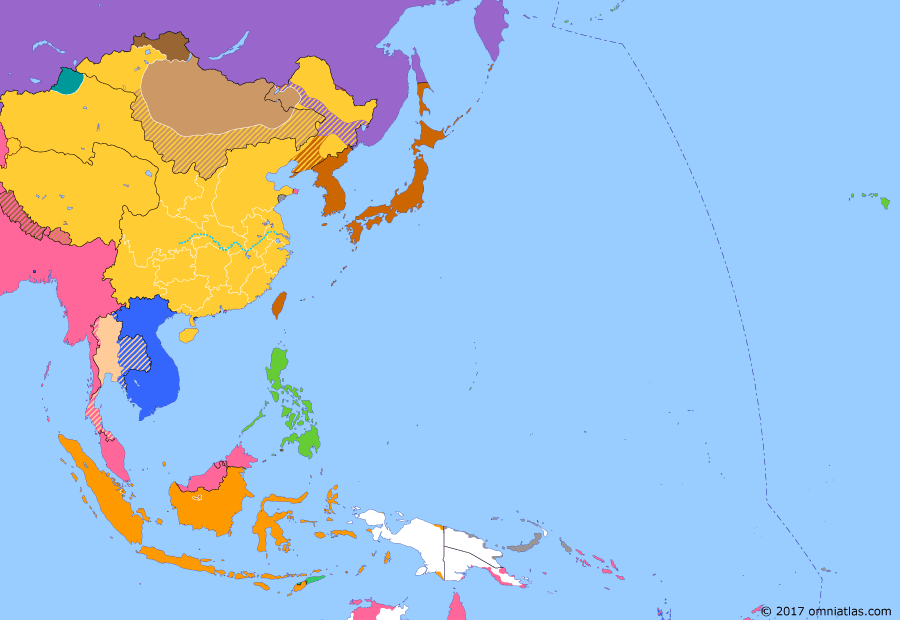Asia Pacific 1912: Yuan Shikai and the Republic of China
10 March 1912
10 Mar 1912
Yuan Shikai and the Republic of China
6 Dec 1911 Chinese Revolution
10 Mar 1912 Yuan Shikai and the Republic of China
28 Jul 1913 Second Chinese Revolution
10 Oct 1914 Conquest of the German Pacific
18 Jan 1915 Japan's Twenty-One Demands
6 Jun 1916 China's Warlord Era Begins
15 Dec 1917 Russian Revolution
31 Aug 1918 Siberian Intervention
4 May 1919 May Fourth Movement
6 Apr 1920 Creation of the Far Eastern Republic
23 Jul 1920 Zhili–Anhui War
25 Jun 1921 Russia in Mongolia
6 Feb 1922 Washington Naval Conference
30 Dec 1922 Japanese Withdrawal
23 Oct 1924 Beijing Coup
30 May 1925 Shanghai Incident
24 Apr 1926 Anti-Fengtian War
The Chinese revolutionary leader Sun Yatsen declared a republic in January 1912, but to avoid bloodshed he came to a compromise with the military, agreeing to accept imperial Prime Minister Yuan Shikai as president if he could bring about the abdication of the Chinese Emperor. Yuan did so, peacefully ending the Chinese Empire, and was made provisional president of the Republic of China on 10 March.
